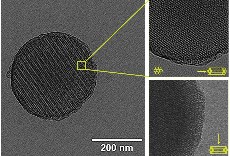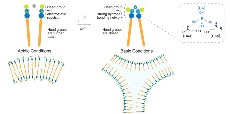Dr. Shuhao Liu's Research Projects
Research Interests:
- Interfacial phenomena: Colloids, Adsorption and Desorption
- Functional Surface & Materials: Antifouling and Antimicrobial Coatings & Materials, Antifungal Coatings, Self-Cleaning Materials, Food Packaging Materials
- Colloids and nanomaterials: Nanoencapsulation, Drug and Delivery
- Composite materials: Antimicrobial Polymer Composites, Thermal Interface Metal/Soft-Matter
- Industry subjects: Surfactants and Emulsion, Oil Production, Stimuli-Responsive Supramolecular Fluids
Nanomaterials for Advanced Chemical and Drug Delivery Systems

Porous Materials (Mesoporous Silica)
Our lab is deeply interested in exploring nanomaterials, especially porous materials, for advanced chemical and drug delivery systems. These materials, known for their high surface area, tunable pore structures, and functional versatility, provide transformative solutions for controlled and targeted release applications in diverse fields.
Porous nanomaterials such as mesoporous silica, functionalized polymers, and metal-organic frameworks (MOFs) have been investigated for applications ranging from sustained release of asphaltene inhibitors in energy production to antimicrobial agents for enhanced food safety. In the biomedical domain, these materials enable precise delivery of drugs, small molecules, and imaging agents, improving therapeutic outcomes while reducing side effects. Our lab is also particularly interested in magnetic nanomaterials that integrate diagnostic and therapeutic functionalities, offering cutting-edge approaches for imaging and treatment. By designing and tailoring nanomaterials to meet specific application requirements, our research contributes to innovations in sustainability, healthcare, and industrial efficiency.
Multifunctional Nanomaterials and Surface Coatings

Nanofibers for food packaging

Multifunctional Surfaces
![]()
Surface Wettability
Our lab is dedicated to exploring multifunctional nanomaterials and surface coatings with diverse applications ranging from antifouling and drug release to anticorrosion and anti-icing. One area of focus is on designing advanced surfaces, including superhydrophobic, superoleophobic, and SLIPS (slippery liquid-infused porous surfaces) materials. These engineered surfaces rely on precise control of wettability and barrier properties to prevent dirt accumulation, bacterial adhesion, and contamination. By minimizing fouling, these surfaces improve hygiene and efficiency in industries such as food packaging, healthcare, and environmental protection.
Beyond antifouling, these surface designs also exhibit exceptional performance in applications like anticorrosion, where they protect metal structures from environmental degradation, and anti-icing, where they inhibit ice formation under extreme conditions. In addition, our lab is particularly interested in leveraging these multifunctional surfaces for controlled drug delivery and chemical release, integrating their protective and responsive properties with nanomaterials for enhanced performance..
Stimuli-Responsive Materials for Smart Applications

Stimuli-responsive system
Our lab is advancing the development of stimuli-responsive materials that adapt their properties in response to environmental triggers such as pH, temperature, or ionic strength. These materials have transformative applications, ranging from enhancing oil and gas production through advanced fluid systems to enabling smart drug delivery platforms for precision medicine. By tailoring their responsiveness, these materials offer controlled release capabilities and dynamic adaptability, making them ideal for use in energy, healthcare, and other cutting-edge technologies.
Fundamental Studies of Interfacial Interaction

Fundamental studies of interfacial interaction between colloids and surfaces
Our lab investigates the intricate interactions occurring at interfaces, focusing on how colloids, surfaces, and fluids interact under varying conditions. By understanding the forces and dynamics at play—such as adhesion, wetting, and electrostatic interactions—we aim to unlock new possibilities in the design of functional materials.